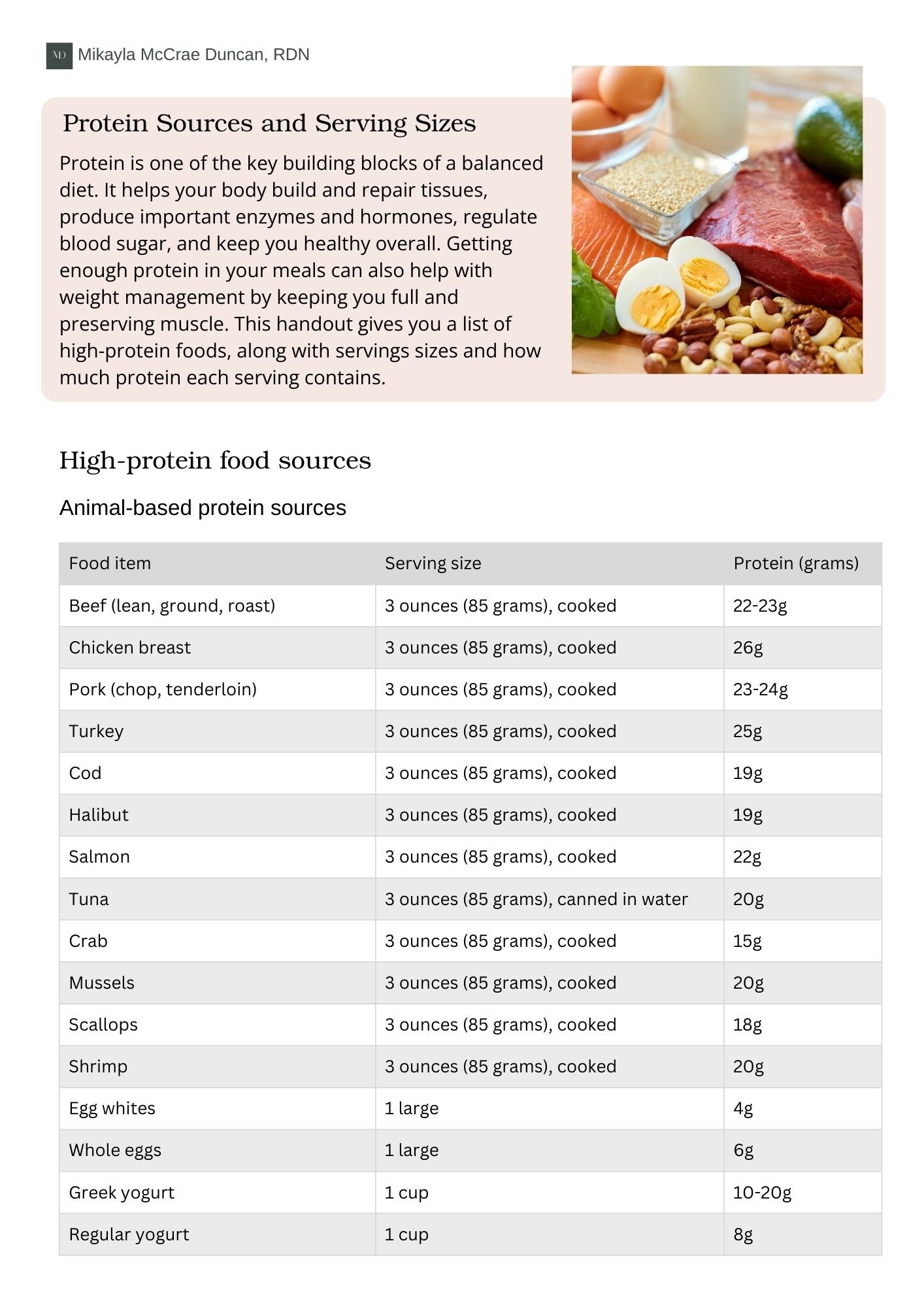Why Protein Matters
Once we know how many calories our body needs in a day, we can take a closer look at specific macronutrients. When it comes to weight loss, protein is the key macronutrient. It plays a role in nearly every system in your body—from muscle repair to hormone balance—and it has unique benefits that make it especially helpful for fat loss and maintaining muscle.
What Protein Does in the Body
Builds and repairs muscle: Every workout creates small muscle breakdown. Protein provides the amino acids your body needs to repair and rebuild, which helps you get stronger and maintain lean mass.
Supports metabolism: Muscle tissue burns more calories at rest than fat tissue. When you are in a calorie deficit for weight loss, the body will want to get rid of more muscle tissue than fat tissue. Eating high protein helps preserve muscle during weight loss, which prevents your metabolism from slowing down too much.
Keeps you full: Protein is the most filling macronutrient. High-protein meals and snacks help reduce cravings and make it easier to stay satisfied in a calorie deficit.
Boosts calorie burn: Protein has the highest thermic effect of food (TEF). About 20–30% of the calories in protein are used up just to digest and metabolize it, compared to only 5–10% for carbs and 0–3% for fat.
How Much Protein Do You Need?
A general target for weight loss is 1.2–2.0 grams of protein per kilogram of body weight per day (or roughly 0.6–1.0 grams per pound). For many adults, this works out to around 80–120 grams per day, depending on size, activity, and goals. Higher intakes are especially important if you’re exercising regularly or trying to lose fat while maintaining muscle. Spreading protein across meals (20–40g each time) is more effective than loading it all in at dinner.
Sources of Protein
Animal-based: Chicken, turkey, beef, pork, fish, eggs, Greek yogurt, cottage cheese, whey protein.
Plant-based: Lentils, beans, tofu, tempeh, edamame, seitan, quinoa, soy protein powder.
Convenient options: Protein shakes, bars, jerky, canned tuna/chicken, boiled eggs.
Practical Tips for Hitting Your Protein Goals
Include protein at every meal. Even breakfast—swap cereal for Greek yogurt with fruit, or eggs with veggies.
Use snacks strategically. Nuts and cheese, protein shakes, or hard-boiled eggs help fill the gaps.
Lean into variety. Mix animal and plant proteins to keep meals interesting and balanced.
Plan ahead. If you track food, check your protein total midday so you’re not scrambling to fit it all in at night.
Looking for easy ways to hit your protein goals? Download my free Protein Sources & Serving Sizes Guide for a quick reference you can save or print.
